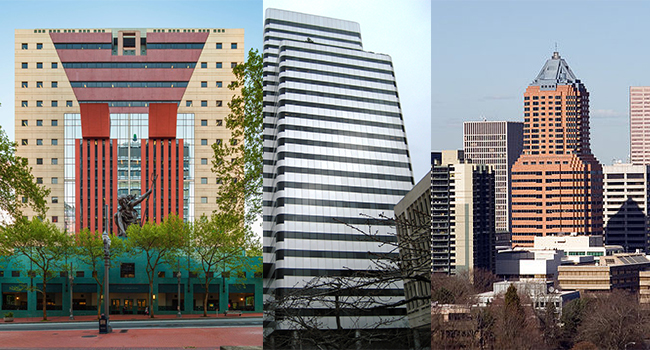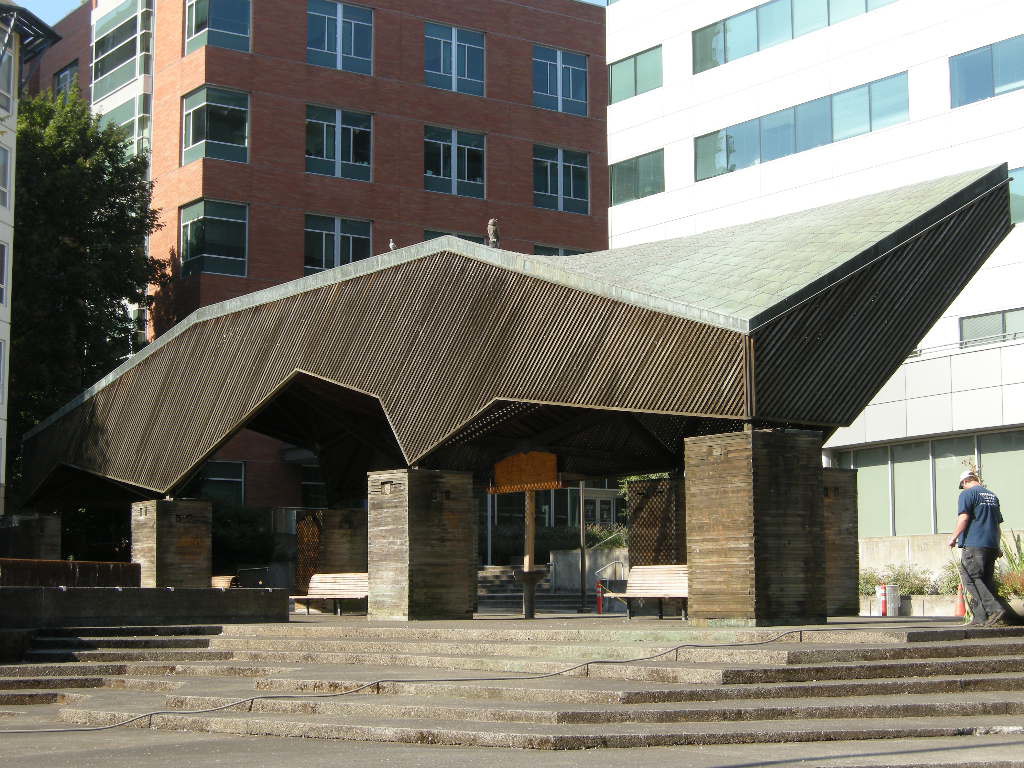In March 2015, we wrote about PDX Post Modern and Mid-Century Modern architecture, which to our eyes was being referenced by local architectural firms for their new designs located at the Burnside Bridgehead and elsewhere. A year later and the City of Portland is continuing to build, build, build especially around the Burnside Bridgehead. In addition, cries for the demolition of a Post Modern icon of architecture: Michael Grave’s designed, Portland Public Service Building, have turned into a proposed $200 million design-build project. Has Portland come to appreciate its architectural heritage from the recent past?

Portland Building, PacWest Center, Koin Tower
DoCoMoMo_Oregon, a local chapter of DoCoMoMo_US, is a non-profit organization dedicated to promoting the interest, education, and advocacy of the architecture, art, landscape, and urban design of the Modern Movement. Recently the Board voiced concerns for the type of alterations proposed for the late modern (post modern!) PacWest Center designed by Hugh Stubbins & Associates / Skidmore, Owings & Merrill, which underwent a Design Advice. John Russell, the original developer of the project who chose Hugh Stubbins as the architect, from a shortlist that included Philip Johnson and Minoru Yamasaki, provided testimony that agreed with the design team that the retail in the building isn’t currently working, but that the building’s design isn’t the major contributor. Overall, the Design Commission encouraged the design team to treat the PacWest Center like a historic building, and use the Secretary of the Interior’s Standards as an approach for the renovation.
The Koin Tower, designed by ZGF Partnership in 1984, is one of the most prominent buildings in Portland’s downtown rising sky-line, and an example of Post Modern architecture. It is Post Modern with whimsical lines and historical references to Gothic, Spanish, and Deco architectural characteristics. (King, 106) However, unlike the Post Modern Portland Building (interiors designed by ZGF), the Koin Tower has been accepted for its architectural whimsy in a place with a known tag line, “Keep Portland Weird.”
And on a smaller scale that truly connects to placemaking, the Lovejoy Fountain Pavilion designed by Charles Moore in 1962 as part of Lawrence Halprin’s fountain sequence was thoughtfully restored in 2012.
Appreciating the Recent Past
So, has Portland come to appreciate its architectural heritage from the recent past? While these four examples offer a glimpse of optimism towards the maintenance and rehabilitation of architecture from the recent past, there is still an uphill battle towards the preservation and rehabilitation of Post Modern, Modern, and historic architectural resources. This is not an argument to save every resource, but it’s our responsibility to our present and future communities to have places rich in architectural resources from different movements of history- architecture rich in diversity. For architectural diversity contributes to our place making, culture, and identity. Let’s Keep Portland Architecture Weird by both adding to and maintaining and rehabilitating.

Lovejoy Pavilion
Written by Kate Kearney, Marketing Coordinator
———————————————————-
King, Bart. An Architectural Guidebook to Portland. 2nd ed. Corvallis: Oregon State University Press, 2007. Print.
